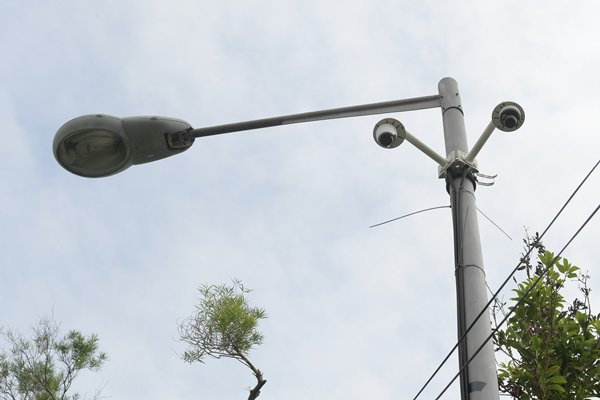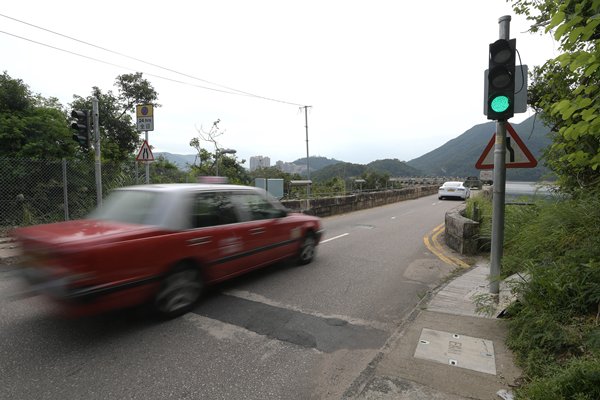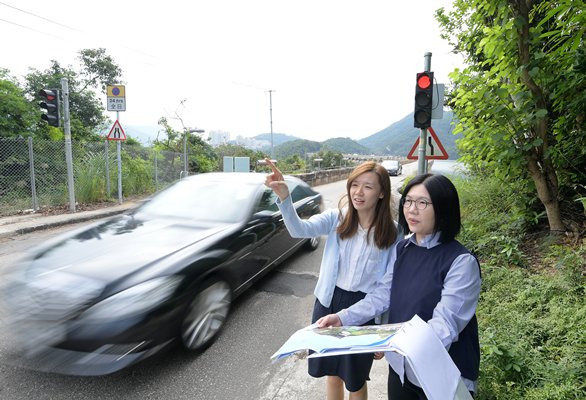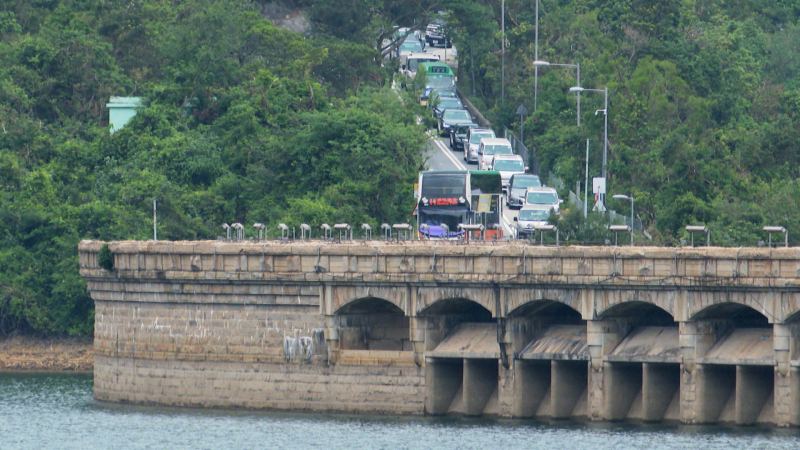New fix for old traffic woes
The Tai Tam Road (Dam Section) was constructed more than a century ago and is part of the thoroughfare connecting Chai Wan and Stanley. But because it is only five metres wide, congestion problems occur when larger vehicles use the road section.
To solve this, a new system of smart traffic lights was commissioned to cut down on delays.
“We had an average four times of traffic deadlock per month and the drivers needed to call the Police to clear the traffic,” Transport Department Engineer Jacqueline Yip said.
“On average it needed 20 minutes to 30 minutes to clear the deadlock and the worst case was one hour.”
As the dam is a declared monument, widening the road section is not possible.
The Transport Department temporarily installed traditional traffic lights last year to improve traffic there, but these were bound by fixed signal durations.
The department’s Engineer Yammie Mak said: “Having considered the pros and cons of setting up traffic signals at the Tai Tam Road (Dam Section), we would like to explore the feasibility in setting up smart traffic signals with an aim to reduce the waiting and passing time of vehicles.”
Flexible signals
In January, the Transport Department commissioned the Chinese University of Hong Kong’s Department of Systems Engineering & Engineering Management to develop the Smart Traffic Control System, which collects real-time traffic information and adjusts the duration of green signals to reduce delays.
The system, which uses video analytic technology, is the first of its kind in the city.
“By using video analytic technology for this smart traffic control system, vehicle types and dimensions can be detected and analysed for traffic flow and traffic queue length data. As such, the most effective green time can be calculated and allocated to the traffic signal,” Ms Yip said.
The department this year installed eight sets of traffic detectors which are effective within 400 metres of either side of the scenic but congestion-prone road.
For instance, when the system identifies that a queue is longer than 200 metres on one side and the other side is less than 200 metres, it allocates an extra 165 seconds of green signal.
After the queue is cleared, the traffic lights show a red signal on both sides for 45 seconds so that all vehicles along the Dam Section can be cleared.
Reduced delays
The system was commissioned in August and according to the latest figures, it has already been twice as effective in terms of saving time compared with traditional traffic lights.
“According to our records, from August 25 until now, the traffic queue in Tai Tam Road did not exceed 400 metres (at peak hours),” Ms Yip said.
“With a traditional traffic light, it took around 400 seconds for the drivers to queue and pass through the dam, but with a smart traffic light, it took only around 145 seconds.”
Ms Yip said the weather, light and environmental factors also need to be considered carefully to ensure the reliability of the system.
The detectors capture images from a high angle to protect drivers’ privacy, she added.
People welcomed the system saying it is more efficient.
“Of course it is good. This road is too narrow and in the past, there were congestion problems,” Mr Tse, who was travelling on the Tai Tam Road (Dam Section), said.
Commuter Miss Ng said: “It is safe and I do not need to wait very long for the traffic light signal to change. I fully support this measure.”
Thorough evaluation
The system also has a fail-safe which allows it to switch back to a conventional mode of operation if it encounters an error.
The department will evaluate the Smart Traffic Control System’s performance next year, including its reliability, impact on traffic and cost-effectiveness.
As outlined in the Hong Kong Smart City Blueprint in 2017, the Government will introduce pilot intelligent traffic signal systems with sensors for pedestrians and vehicles at road junctions starting from 2021.




